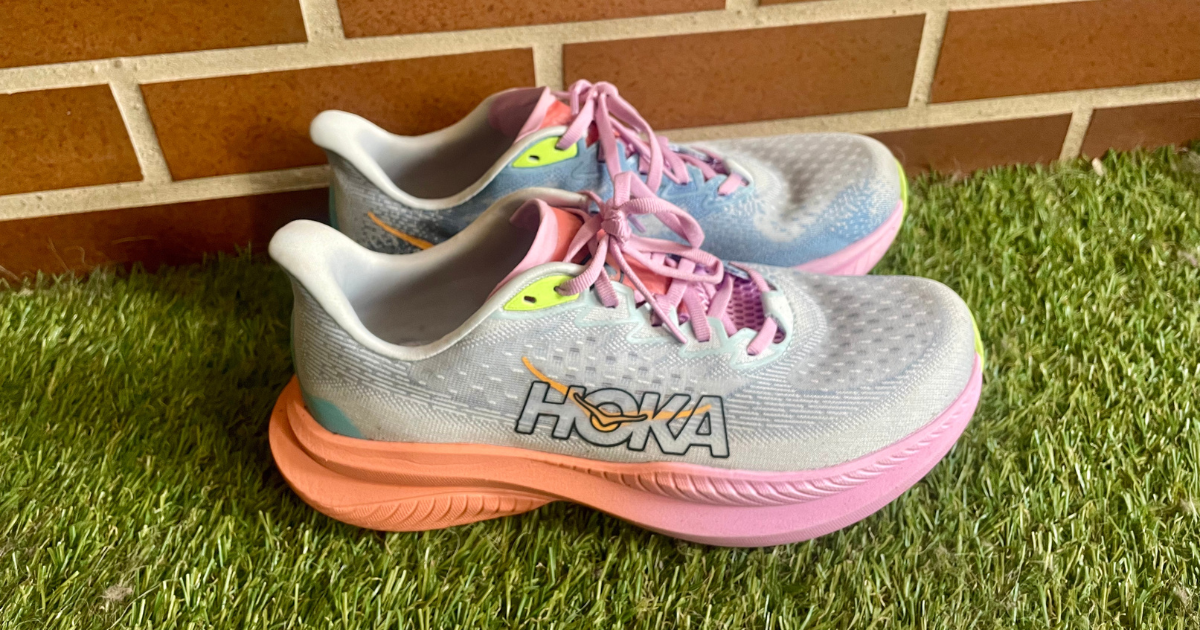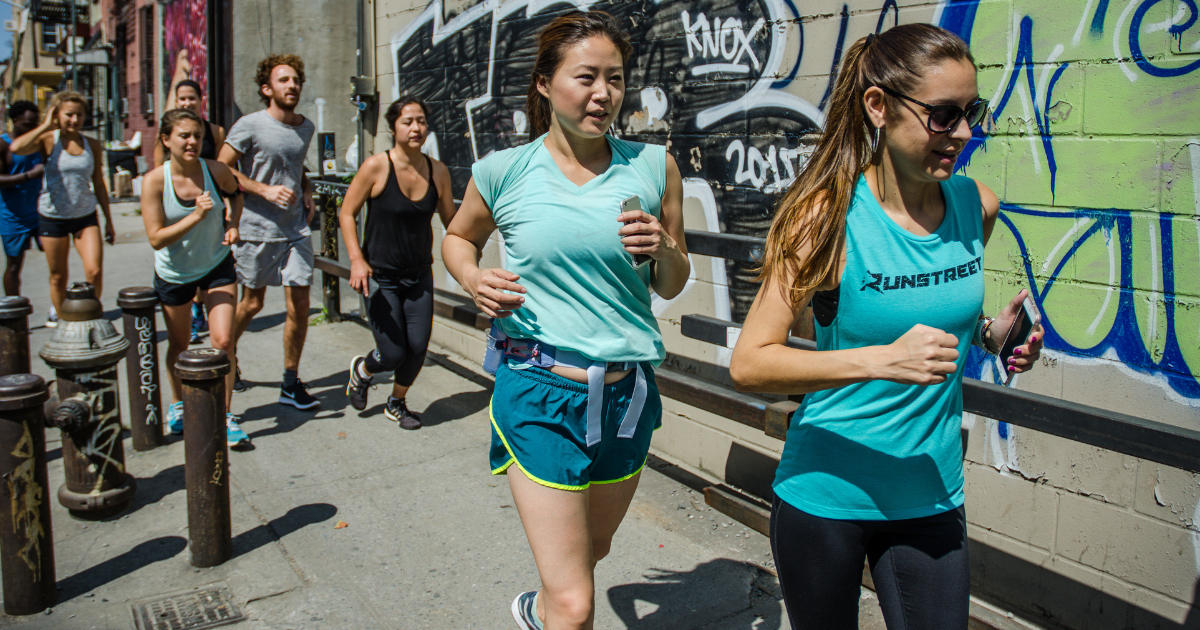Hoka Shoe Review: Women’s Mach 6 - My Experience
By Marnie Kunz, NASM-certified trainer, USATF- RRCA-certified run coach
I’m weighing in with my Hoka shoe review for the Hoka Mach 6 running shoe, which I have been running in recently. As a running coach and longtime runner, I always followed my cross country coach’s advice and stuck with the shoe brand that worked for me and kept me generally injury-free. For years, I ran in Nike or New Balance shoes. But all the pounding on pavement from my running in NYC for the last 10 years was taking a toll on my feet, and I decided it was time for more cushioning. So I decided to try Hoka, the super cushioned kicks that are becoming increasingly popular. This review is based on my experience with the Hoka Women’s Mach 6 running shoes.
Related: Hoka Speedgoat 6 Running Shoe Review, Hoka Vs. New Balance Running Shoes
Disclaimer: When you buy through our links, we may earn a commission - at no extra expense to you. We only do this for products we have tried and recommended. Learn more.
Hoka Running Shoes Background
Hoka’s shoes date back to 2010, when they were developed in France as cushioned shoes for running down steep hills and mountains. Since then, the shoe has rapidly expanded its reach. By the time the New York Times announced it was one of the fastest-growing shoe companies and a big hit on the streets of New York, the word had gotten out among runners, walkers, and even the fashion crowd.
What drew me to Hokas, like many people, was comfort. After suffering from foot and nerve problems for most of 2023, I was ready to try anything to help me run regularly and race again. After getting some custom orthotics from my podiatrist, I began talking to other runners and many recommended Hokas for superior cushioning.
Related: New Balance 860v14 Running Shoe Review
Hoka Cushioning
Hokas are considered maximalist running shoes. They offer maximum cushion with specially designed, supportive midsoles. What makes Hokas unique is their super plush cushioning in the sole while maintaining a light weight. If you’re often running on pavement, need extra support for injuries, or are seeking a comfortable running shoe, Hokas are an excellent option.
“Hokas are the only shoes that are good for your feet, according to my podiatrist!” an older woman told me when I tried on the thick, cushioned shoes at Super Runners Shop on the Upper West Side in Manhattan. She said she got the first “ugly Hokas,” and has seen things change significantly since then. She said that her daughter, who used to make fun of her “ugly shoes,” just got Hoka sneakers too.
After trying out many shoes (thanks to my friend Jamaal for the shoe help and patience!), I landed on the women’s Hoka Mach 6. They felt like walking on clouds.
“Hokas are in a league of their own, with a different form of cushioning than all the other running shoes,” my friend Jamaal, a shoe fitting expert at the shop, told me.
I was sold. Although I usually like dark shoes, I even found the Easter egg colors of my new Hoka Mach 6 shoes charming. Before I get into my Hoka shoe review for the Mach 6 running shoes, here is a basic overview of the shoe:
Related Post: Guide to Running on Concrete
Hoka Mach 6 Running Shoes
Shoe Type: Running Shoes
Shoe Category: Neutral
Weight: 6.7 oz.
Heel-to-Toe Drop: 5.00 mm
Stack Height: 37 mm (Heel), 32 mm (Forefoot)
Widths: Regular, Wide
Waterproof: No
Similar Hoka Running Shoes
Hoka has a growing number of running shoe models. Here are the popular Hoka running shoes:
Hoka Mach 5 is the older version of the Mach 6 model. These are neutral running shoes for everyday running and walking.
Hoka Clifton are neutral, well-cushioned yet lightweight shoes.
Hoka Bondi and running and walking shoes that are neutral with extra-plush cushioning.
Hoka Speedgoat are trail running and hiking shoes that are neutral shoes with good traction for uneven terrain.
Hoka Mach X are neutral shoes with a responsive design built for speed.
So, what is a neutral shoe, exactly? Neutral shoes are the most popular type of running shoes and work well for most people. They do not have stability or motion control features for people who run or walk with pronation (rolling of the foot inward or outward). On the other hand, a stability shoe has extra features that help reduce pronation when running.
In my case, I usually wear light stability shoes for moderate pronation, but with the support of my orthotics, I can wear neutral shoes. If you’re not sure what your running gait style is or which shoe is best for you, head to your local running shoe store to get fitted. Running shoe experts can give you a comprehensive fitting and help you find the best shoes for your foot type and comfort.
Related Post: How to Find the Best Running Shoes
Hoka Shoe Review: Women’s Mach 6 Running Shoes
After I purchased my Hoka Mach 6 running shoes, I had a long run scheduled the next day for my half marathon training. I wasn’t sure if I should run in them for 10 miles right away, but they felt so comfortable (unlike my other old, flat shoes) that I took the plunge. And I had a great run, I’m happy to say!
I felt like I was running on clouds for my long run. Normally, I am not the most enthusiastic long runner, but I cruised through 10 miles easily in the Hokas. My legs felt much fresher than usual the next day, and I was thrilled.
Since then, I’ve done many more runs in my Hokas, which have been incredibly comfortable. I love their lightweight feel. The toe box is very roomy, and I was worried the tongue may rub too much or I’d have too much space in the forefoot, but the shoes worked really well for me. The shoes have a streamlined memory foam collar package and a rubber outsole that keeps them lightweight and comfortable.
I also have done speedwork in my Hoka Mach 6 shoes, and I could maintain a 7-mile tempo run workout with my target pace or faster. I thought the sheer size of the shoes, with so much cushioning, may slow me down, but they didn’t at all. In fact, I felt better than usual, with an extra spring in my step.
The only drawback I’ve seen so far to report for my Hoka shoe review is the lack of waterproof technology on this Hoka model. NYC has been very rainy lately, and my last tempo run was in the rain, so my shoes got soaked. I usually wear waterproof trail shoes for rainy days, though, so I will probably wear other shoes for rainy days in the future.
The only other potential con for the Mach 6 shoes is the price. Hokas can be pricier than some other running shoe brands, but I have to say, it is worth it for the comfort and durability of the shoe. Most people report Hokas last 400 to 500 miles, making them last about average or longer than average for running shoes.
Related Post: When to Change Your Running Shoes
Hoka Shoe Review Recap: Mach 6
Pros: Super comfortable, supportive cushioning, lightweight, no break-in time required, breathable, excellent for running on pavement, comfortable for wide feet
Cons: Not waterproof, can be pricey
Overall, I recommend the Hoka Mach 6 women’s running shoes for a comfortable daily trainer for running and walking, especially on paved surfaces. Hoka footwear is known for its superior cushioning, and these shoes do not disappoint. I could wear them for a long run right away with no break-in period.
Hokas are increasingly popular for ultra runners and other long-distance runners, as well as for comfortable walking shoes. With so much supportive cushioning and lightweight designs, Hokas are my top pick for maximalist running shoes. They can be especially helpful for people who run on hard surfaces for extra shock absorption.
The Hoka Mach 6 shoes are designed for running on roads and other paved surfaces. For shoes with more grip for trails, check out the Hoka Speedgoat. The Hoka Mach 6 are a great shoe for an everyday run on pavement or similar surfaces.
Have you tried Hoka running shoes? Share your Hoka shoe review insights and more by following and tagging @Runstreet on Instagram. For a training plan to help you crush your running goals, head to our Runstreet Training Center.
Happy running to you!
Related Post: Hoka Clifton 10 Review Based on Running in NYC, Compression Boots Benefits + Tips for Runners, I Tried Hoka Recovery Slides: Here’s How It Went, Garmin Forerunner 55 Watch Review
Marnie Kunz is a NASM-certified personal trainer and USATF- and RRCA-certified running coach based in Brooklyn, NY. Marnie likes helping people get and stay active to enjoy a better quality of life. When she’s not doing fitness things, Marnie enjoys exploring with her dog, a mischievous rescue Akita.




